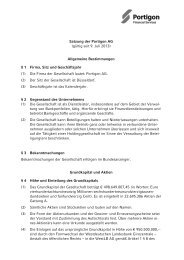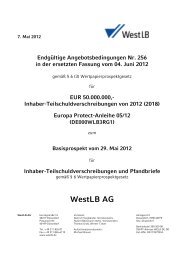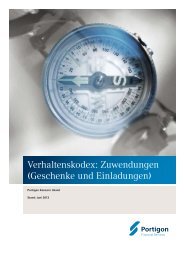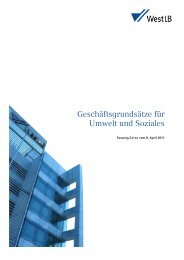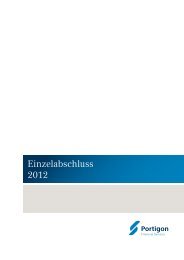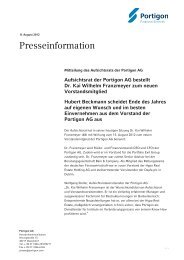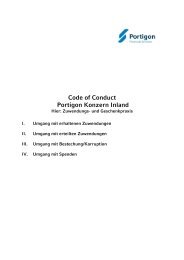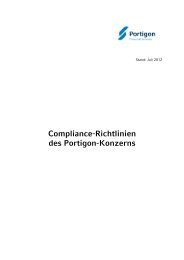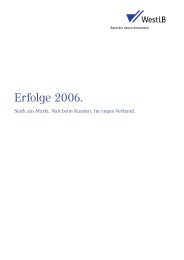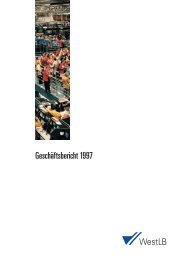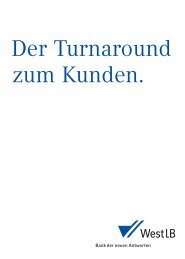pdf, 1996K - WestLB
pdf, 1996K - WestLB
pdf, 1996K - WestLB
You also want an ePaper? Increase the reach of your titles
YUMPU automatically turns print PDFs into web optimized ePapers that Google loves.
Partly-paid Instruments<br />
The Issuer may issue Instruments where the issue price is payable in more than one instalment. Failure to pay any<br />
subsequent instalment could result in an investor losing all of its investment.<br />
Floating Rate Instruments with a Multiplier or Other Leverage Factor<br />
Instruments with floating interest rates can be volatile investments. If they are structured to include multipliers or other<br />
leverage factors, or caps or floors, or any combination of those features, their market values may be even more volatile<br />
than those for securities that do not include those features.<br />
Inverse Floating Rate Instruments<br />
Inverse Floating Rate Instruments have an interest rate equal to a fixed interest rate minus an interest rate based upon a<br />
reference interest rate such as EURIBOR or LIBOR. The market values of those Instruments typically are more volatile<br />
than market values of other conventional floating rate debt securities based on the same reference interest rate (and with<br />
otherwise comparable terms). Inverse Floating Rate Instruments are more volatile because an increase in the reference<br />
interest rate not only decreases the interest rate of the Instruments, but may also reflect an increase in prevailing interest<br />
rates, which further adversely affects the market value of these Instruments.<br />
Fixed/Floating Rate Instruments<br />
Fixed/Floating Rate Instruments may bear interest at a rate that converts from a fixed interest rate to a floating interest<br />
rate, or from a floating interest rate to a fixed interest rate. Where the Issuer has the right to effect such conversion, this<br />
will affect the secondary market and the market value of the Instruments since the Issuer may be expected to convert the<br />
rate when it is likely to produce a lower overall cost of borrowing. If the Issuer converts from a fixed interest rate to a<br />
floating interest rate, the spread on the Fixed/Floating Rate Instruments may be less favourable than the spreads then<br />
prevailing on comparable Floating Rate Instruments tied to the same reference interest rate. In addition, the new floating<br />
interest rate at any time may be lower than the interest rates on other Instruments. If the Issuer converts from a floating<br />
interest rate to a fixed interest rate in such circumstances, the fixed interest rate may be lower than then prevailing<br />
interest rates on its Instruments.<br />
Instrument Issued at a Substantial Discount or Premium<br />
The market values of debt securities issued at a substantial discount or premium from their principal amount tend to<br />
fluctuate more in relation to general changes in interest rates than do prices for conventional interest-bearing debt<br />
securities. Generally, the longer the remaining term of the debt securities, the greater the price volatility as compared to<br />
conventional interest-bearing debt securities with comparable maturities.<br />
Target Redemption Instruments<br />
The automatic redemption feature of Target Redemption Instruments may limit their market value. Due to the overall<br />
maximum amount of interest paid under Target Redemption Instruments, even in a favourable market/interest<br />
environment their market value may not rise substantially above the price at which they can be redeemed.<br />
The automatic redemption may take place when the cost of borrowing is generally lower than at the issue date of the<br />
Instruments. At those times, an investor generally would not be able to reinvest the redemption proceeds at an effective<br />
interest rate as high as the interest rate on the Target Redemption Instruments being redeemed and may only be able to<br />
do so at a significantly lower rate. Potential investors should consider reinvestment risk in light of other investments<br />
available at that time.<br />
Credit Linked Instruments<br />
The value of any Instruments linked to the credits of reference entities (the Reference Entities) may vary over time in<br />
accordance with the credit of the Reference Entities. An investment in Credit Linked Instruments involves a high degree<br />
of risk. In the event of the occurrence of a "Credit Event" (as set out in the relevant Final Terms) (the Credit Event) in<br />
respect of any one or more Reference Entities, the Issuer may redeem the Instruments either by delivering to Holders<br />
certain "Deliverable Obligations" (as set out in the relevant Final Terms) (the Deliverable Obligations) of any such<br />
Reference Entity that has suffered a Credit Event in full satisfaction of its obligations under the Instruments or, if "Cash<br />
Settlement" is specified in the relevant Final Terms, by the payment of an amount of cash as determined in accordance<br />
with the provisions of the relevant Final Terms. In certain circumstances, the Instruments may cease to bear interest<br />
and, on redemption, the investor may be repaid nothing. Credit Linked Instruments may not benefit from the same<br />
32



